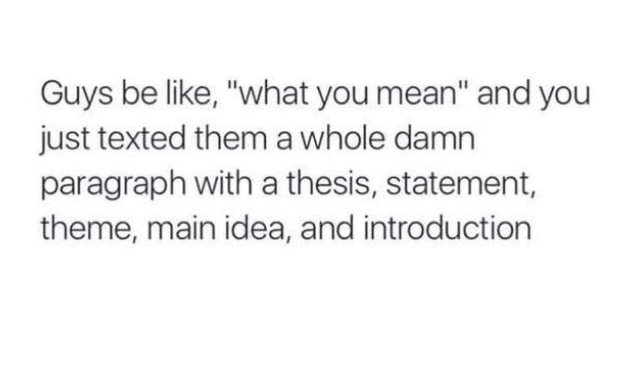10.2: Thesis and Topic Sentences
- Page ID
- 134112

Thesis statements\(^{76}\) tell us the goal of the entire writing assignment, and topic sentences tell us the goal of a particular paragraph. Essentially, the CEO is the thesis statement, and the topic sentences are the managers.
Tips\(^{77}\)
- Often, writing an introductory paragraph is the most difficult part of writing an essay. So, don’t start there if you don’t want to. Go back to your brainstorming and find a different starting point.
- Transitions connect the paragraphs together by using key words to draw the reader from one paragraph (idea) to the next.
- Each body paragraph is something like a miniature essay in that they each need an introductory sentence that sounds important and interesting, and that they each need a good closing sentence in order to produce a smooth transition between one point and the next. Body paragraphs can be long or short. It depends on the idea you want to develop in your paragraph. Depending on the specific style of the essay, you may be able use very short paragraphs to signal a change of subject or to explain how the rest of the essay is organized.
Example Thesis Statements from Various Disciplines
The following are examples of reasonable thesis statements one might use to address a wide variety of topics and for a variety of purposes:
- Math/Natural Science (to explain): Although Fibonacci sequences are most often applied to mathematical contexts, the sequences play an interesting role in nature as well.
- Art (to explain): Pablo Picasso’s innovative approach to art led to a new movement, not only in art, but in music and literature as well.
- Psychology/Criminal Justice (to persuade): It is unethical to sentence serial killers to the death penalty because they are essentially mentally ill.
- Literature (to analyze): A different aspect of the American dream motivates each of the main characters in John Steinbeck’s of Mice and Men.
- Agriculture (to persuade): The USDA’s current procedure for detecting mad cow disease in cattle earmarked for human consumption is grossly inadequate.
- Astronomy (to analyze): There are valid arguments on both sides of the controversy regarding the recent reclassification of Pluto.
- Business (to explain): The quantity theory of money emphasizes the positive relationship of overall prices with the quantity of money.
\(^{76}\)“Basic Writing/Print version.” Wikibooks, The Free Textbook Project. 9 Sep 2008, 16:02 UTC. 11 May 2016, 18:08<https://en.wikibooks.org/w/index.php...&oldid=1273791>. Licensed CC-BY-SA.
\(^{77}\)“How to Write an Essay/Parts.” Wikibooks, The Free Textbook Project. 22 Apr 2016, 07:12 UTC. 16 May 2016, 14:59 <https://en.wikibooks.org/w/index.php...&oldid=3073150>. Licensed CC-BY-SA.


